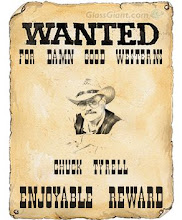I said I would put Mami's report of the Japan Paralympic ceremonies and send-off on this blog, so here it is. The photos are below in the first posting.
Tuesday, February 16, the day a Japanese athlete won a our first bronze medal at Vancouver, ceremonies for the athletes going to the Winter Paralympic Games were held at the JAL Hotel in Daiba, Tokyo.
Japan’s 42 para-athletes will compete in alpine ski, Nordic ski distance, biathalon, ice sledge hockey, and wheelchair curling; 53 administrators and support staff will accompany them.
Orientation came before the ceremonies. But first, Deputy Chairman Negi of the Paralympian Association of Japan (PAJ), who is also on the steering committee of the Japan Paralympic Committee, spoke to the athletes, giving them information about what to expect and cheering them on. At the venue, the JPC members sat facing the athletes and there was an atmosphere of tension in the hall, but Mr. Negi said, “I’ll change this atmosphere.” Still, it seemed he was quite tense, and when he returned, he commented, “As I thought, the Paralympics are a big deal.”
Then, as soon as the orientation portion was finished, time came to talk about PAJ, and that was up to me because Chairman Junichi Kawai was unable to attend and I had to stand in for him. At first they gave me five minutes, but the day before the ceremonies the time was cut to two minutes. Thankfully, after I finished, lots of people told me my presentation was short but very easy to understand. (whew) I haven’t been so tense for ages.
Once all the greetings were over, I got a chance to have a good look at the athletes and administrators, and found that I knew many of them. I couldn’t help smiling. There’s nothing more terrible that making a presentation before a lot of people you know (lol).
Actually, more that half the athletes at the ceremonies joined PAJ right then and there. We thank them for their cooperation.
In 2010, PAJ makes a new start as a foundation and I think we need to listen to all para-athletes, regardless of their sport, gender, or age.
About the ceremonies. VIPs included the Canadian Ambassador to Japan, Minister Agetsuma from the Ministry of Health, Labor, and Welfare, and Dietman Tana, the chairman of the Diet Paralympic Promotion Federation. The national flag was raised, and the captain of the Paralympic Team, Yoshihiro Nitta, made the Athlete’s Pledge. This will be the fourth Paralympic appearance for Nitta, and he said, “There’s no assurance that any of us can win medals. The level of Para-athletics has gotten that high.” Although he was careful, he also said that “we should never forget to be thankful for the opportunities we have.” The national flag bearer will be Ice Sledge Hockey team member Takayuki Endo.
There were more than 100 members of the media at the ceremonies.
Prime Minister Hatoyama came in after the ceremonies. From the podium he asked, “Where is Captain Nitta?” and he spoke to veteran athletes such Mr. Obinata and Mr. Hidai. After the PM spoke for a few minutes, he made the rounds of all the tables to speak to the athletes and give them photo ops.
Perhaps because there are not as many events in the Winter Paralympics, but the athlete entourage seemed to be familiar with each other and anxious to do their best at the Games.
I saw athletes my own age, Daisuke Uehara and Kozo Kubo, as well as Alpine and Curling athletes I’d met at the November event. It was good to see them and get a chance to speak to them again. The athletes were a bit tired (they’d been in meetings from 13:00 and it was almost 20:00 then), but they still looked good.
After the Winter Olympics, get ready for the Paralympic Opening Ceremonies on March 12!!
-- from Mami Sato, paralympic long jumper





































